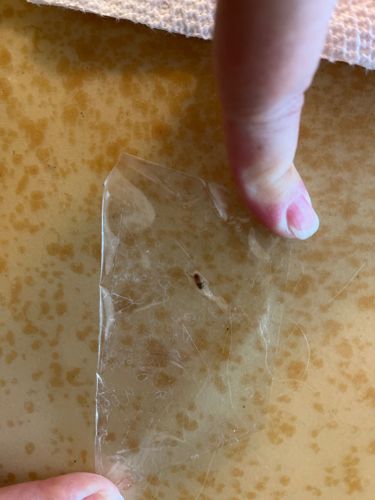Larder Beetle
Scientific Name: Dermestes lardarius
Order & Family: Coleoptera, Dermestidae
Size: 6-10 mm long (adults); larvae can be up to 15 mm long.

Natural Habitat
Typically found in homes, museums, and food processing facilities, especially in dark, undisturbed areas where food sources (like dried meats, pet food, or natural fibers) are present. Often found infesting pantries, attics, and wall voids.
Diet & Feeding
Scavenger, feeding on a wide range of animal products and high-protein materials including cured meats, cheese, dried fish, pet food, leather, wool, furs, and even dead insects or rodents. Larvae are particularly destructive feeders.
Behavior Patterns
Adults are attracted to light and may be seen flying, particularly during warmer months. Larvae are typically found in dark, secluded areas near their food source. Both larvae and adults can be active year-round indoors. Larvae often bore into hard materials like wood or insulation to pupate, causing additional damage beyond feeding.
Risks & Benefits
Potential Risks: Considered a common household and pantry pest. They can infest and damage stored food products, natural textiles, and museum collections. Their larvae can cause structural damage by boring into wood for pupation. While not directly harmful to humans (they don't bite or sting for defense), their presence indicates a sanitation issue and can contaminate food. Potential Benefits: In natural ecosystems, dermestid beetles, including Larder Beetles, act as decomposers, helping to break down decaying animal carcasses and organic matter. They are sometimes used in forensics to estimate time of death due to their predictable decomposition patterns on carrion.
Identified on: 9/9/2025